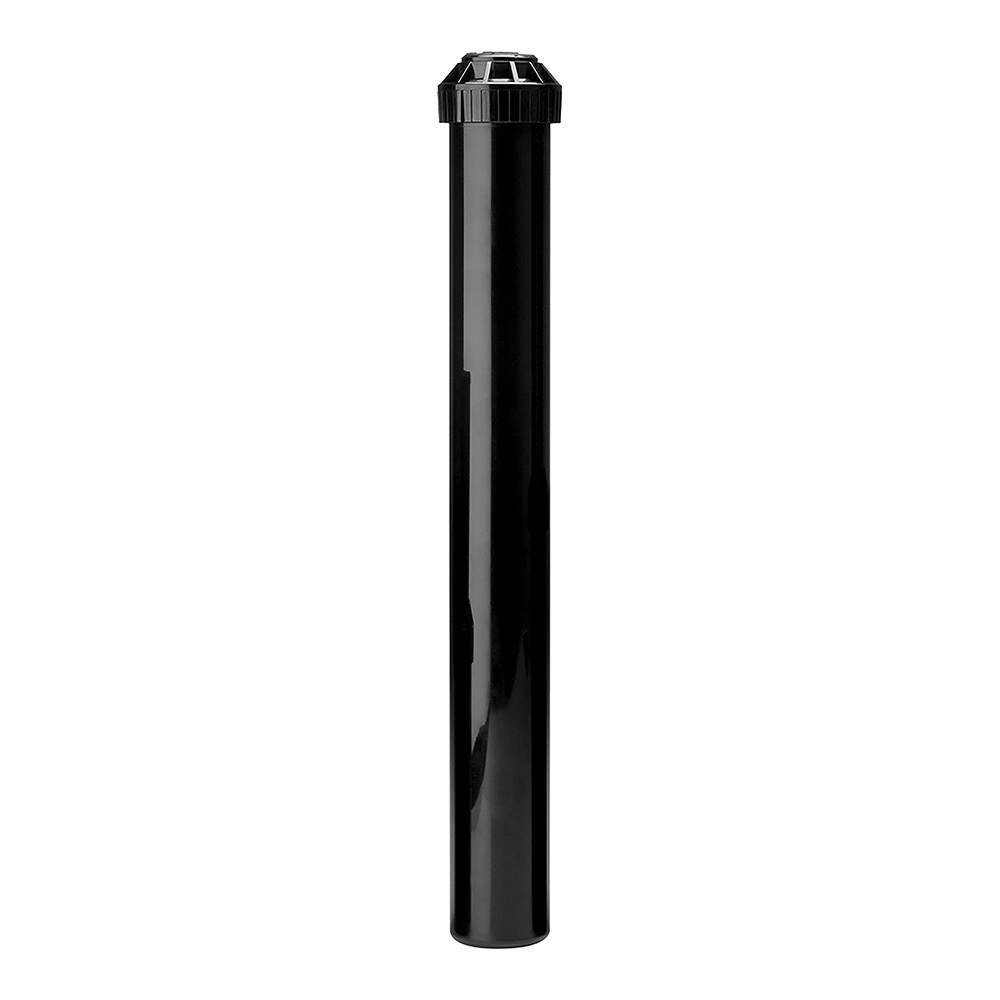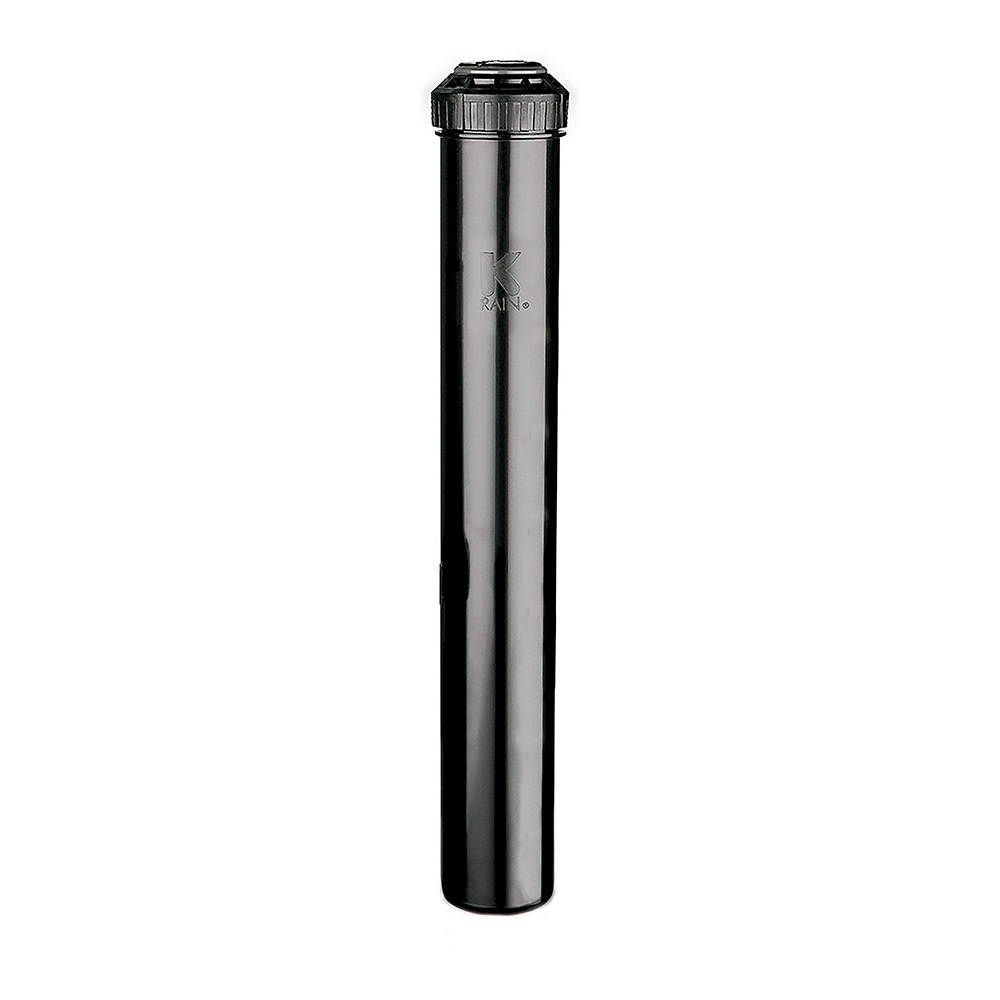Determining Sprinkler System Water Pressure
Knowing how to check water pressure begins with understanding how it is measured. Water pressure is measured in pounds per square inch or psi. An average water pressure is around 30-50 psi. The pressure can vary widely from home to home. Determining your specific pressure is necessary for your irrigation plan. Keep in mind that sprinkler and drip systems will not work properly if the pressure is too low or too high. Most sprinkler systems work at an optimal pressure of 30-50 psi, and most drip systems work best in the range of 20-40 psi. There are ways to adjust the pressure to suit your irrigation needs. The first step is to determine your water pressure.
How To Measure Pressure
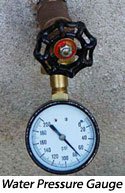
Measure your home’s water pressure by attaching a water gauge onto an outdoor faucet. Then turn off ALL the water throughout your home, including dish and clothes washers. Turn the outdoor faucet on all the way and note the psi reading. Repeat this process for all your outside faucet locations. Take several readings at each location throughout the day. When calculating your sprinkler output use the lowest reading.
The amount of water that moves through pipes at any given time is your flow rate. Flow rate is measured in either gallons per hour (gph) or gallons per minute (gpm). Sprinkler systems and drip emitters have designated output rates which are measured in gpm or gph. When you design your sprinkler layout you can put only as many devices to any given zone as your water supply can accommodate. For instance, if your irrigation design has a zone that requires a higher flow rate you can simply create break down that area into smaller zones. Flow rate is not as critical in drip irrigation because much less water is distributed.
Adjusting Pressure Levels
Water pressure that is too high can cause sprinklers to mist or fog. You can purchase a pressure regulator or individual pressure reducing valves to fix this situation. Pressure reducing valves will restrain the force of the water to a sustainable level. Pressure reducing valves will also reduce the wear and tear on your equipment. You may want to contact a plumber if your water pressure is extremely high as this can be harmful for your interior plumbing fixtures too.
There are also rotors that come with check valves which can accommodate strong water pressure.
Water pressure that is too low is also a problem for a sprinkler system. To fix low pressure you can install a booster pump in your main irrigation line. A boost pump will increase the pressure enough to run your rotors and high-pressure sprinkler heads. To be efficient wire a switch called a pump start relay to your sprinkler circuits that require high pressure. A pump start relay will activate the pump only when the circuits are on. A drip circuit will usually work with low water pressure without the need for additional equipment.
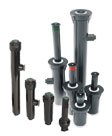

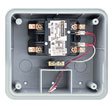
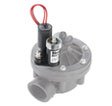
Effects Of Elevation On Water Pressure
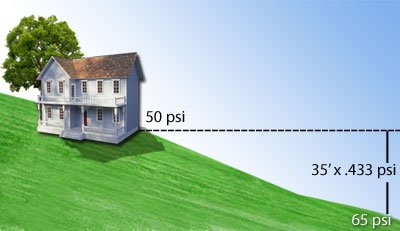
The illustrations show two homes, one is positioned up slope the second shows a house positioned down slope. The water running through to the pipes of the home that is placed down slope will gain pressure. Therefore, the house which is positioned up slope will lose water pressure.
For each foot rise in elevation, there is a corresponding loss of pressure of 0.433 psi. For each foot drop there is a 0.433 psi gain in pressure.
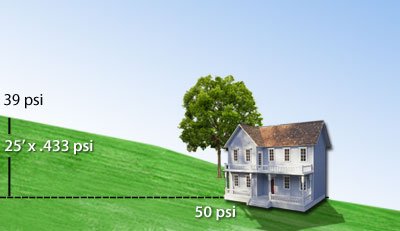
Ex: If your home has a static water pressure of 55 psi, and you have a section in your backyard that is 11 feet higher than your house you would subtract 5 psi which gives you a total psi of 50. The calculation is 11 feet higher x 0.433 (rounded up = 0.5).
Every foot of elevation is equal to 0.422 PSI change in water pressure. For every foot of decline there is a loss of 0.433 in pressure.






















